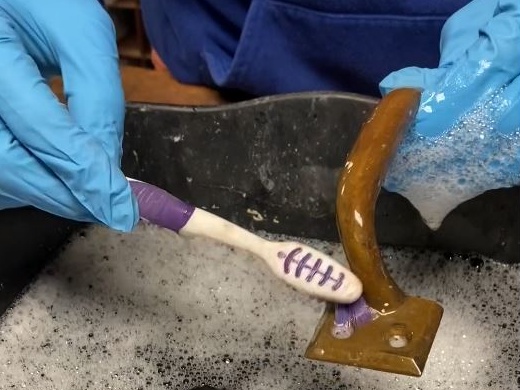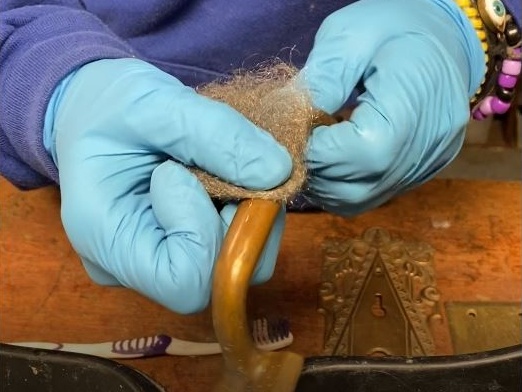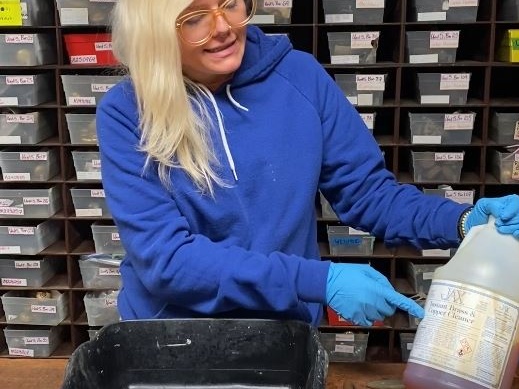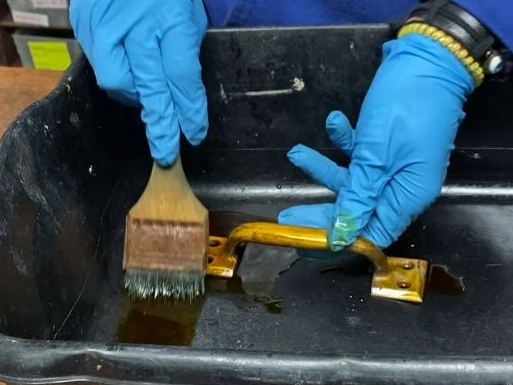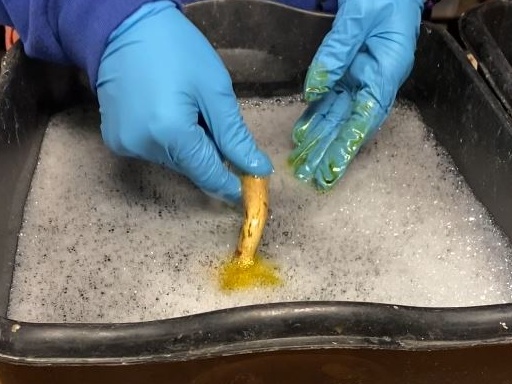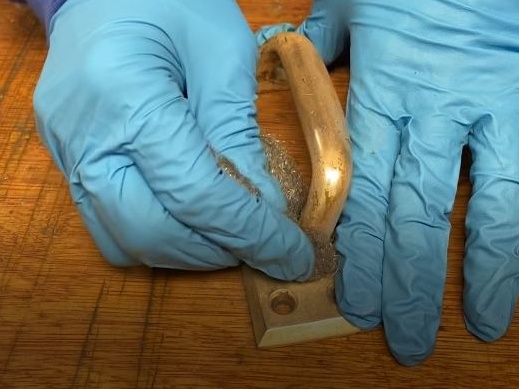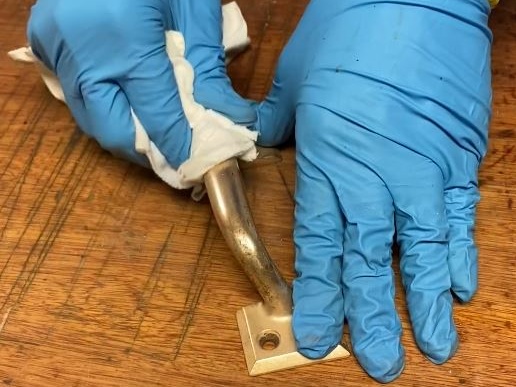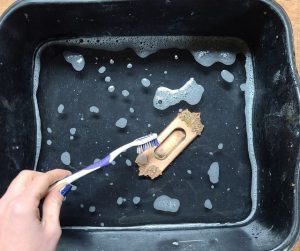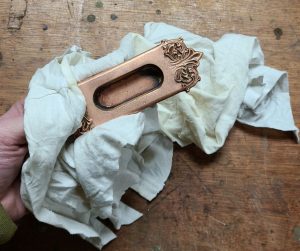Brass and copper provide an air of glamour and class to any home. Over time, these luminous metals can lose their luster through natural aging and use. Not to fear! The original finish can be reclaimed through a little elbow grease and know how. Below you will find a step-by-step process, to take this project on at home.
Items you will need:
- Plastic bin
- Waterproof gloves
- Old clean toothbrush or cloth
- Dry soft cloths
- Old clean paintbrush
- Fine wire wool
- JAX Instant Brass and Copper Cleaner OR your own homemade cleaner (see recipe below)
- Mild dish soap
- Clean cotton gloves (optional)
Want to make your own cleaner?
Brass– Equal parts vinegar, salt, and all-purpose flour. You can also use plain toothpaste (without any mouthwash or other additives).
Copper– Equal Parts real lemon juice and salt OR Tomato ketchup or paste alone.
Let’s talk brass:
The first order of business with brass is to determine if it is solid brass or brass plated. Taking a simple magnet to your hardware will reveal the base metal. If the magnet sticks, you have a brass plated item. If it does not stick, you have a solid brass item. NOTE: If you find you have a brass plated item, you should only follow step one of this process.
Now that you have determined your item’s make-up, let’s get down to business!
1. Clean your item with a simple wash of hot water and mild soap. You can use a soft cloth or toothbrush to loosen any debris off your item. Once the piece has been cleaned, be sure to use a dry soft cloth to dry the item completely. (This is the only step that can be taken with brass plated items, using stronger cleaners on these items can damage the brass plating).
2. On a solid brass piece, you may need to remove the lacquer to achieve a high polished look. Refer to our “How to Remove Paint from Antique Hardware” video. NOTE: Do not follow this step with copper items. You can also use the fine wire wool to remove a small amount of paint.
3. After you have washed and potentially removed the lacquer from your item, gather your plastic bin, waterproof gloves, old paintbrush, and JAX cleaner or homemade cleaner.
4A. Place your hardware into the plastic bin, pour a small amount of JAX cleaner into the bin (start small, you can always add more). Using the paintbrush, apply the cleaner all over your brass hardware. Work the cleaner into the item until you see most of the tarnish fall away.
4B. If you are using your homemade cleaner, use an old clean toothbrush to cover your item in your homemade cleaner. You can also use a clean, soft cloth to apply the paste. An old toothbrush will help you get into any small crevices, where dirt and tarnish tend to gather.
5. Once the item is coated in either the commercial cleaner or homemade cleaner, rinse off the cleaner and dry thoroughly.
6. Now that you have cleaned your hardware of tarnish, time to give it a brisk rub with a piece of fine wire wool. You do not need to apply hard pressure. Using the wire wool will bring the brightness of the finish up.
7. If you have a pair of clean cotton gloves, put them on before you give your hardware one last buff. The gloves will help keep fingerprints off your newly polished hardware. Using another clean, soft cloth, buff the item to a brilliant, rich shine.
8. If you removed the lacquer, you would want to apply a fresh coat to finish now.
Let’s talk copper:
1. If your copper piece has moderate to severe tarnish, a stronger cleaner will be your best bet. Once again, a commercial cleaner can work quite well, but you can create your own at home.
2. Apply the paste to your item with a clean, soft cloth, working the salt into small areas to help remove the tarnish. Rinse the item clean.
3. Dry your piece and buff the piece with a jeweler’s cloth briskly.
a. If you find the at-home cleaners, do not remove the tarnish completely, turn to a commercial cleaner intended for the metal.
Cleaning brass and copper can be a rewarding experience, the luster and brilliance that can be achieved through these steps can truly feel like a magic trick. Enjoy showing off your hard work to friends and family.
